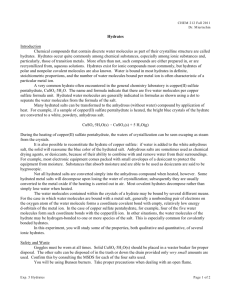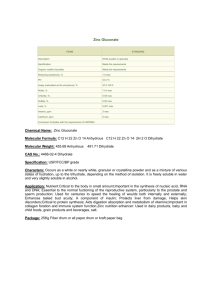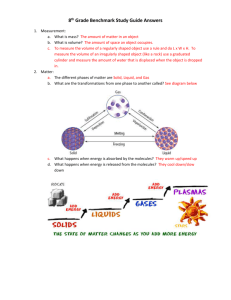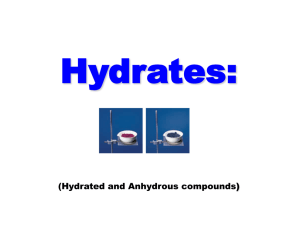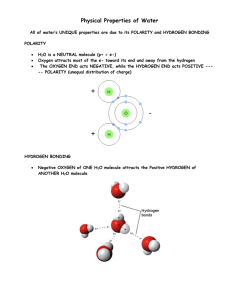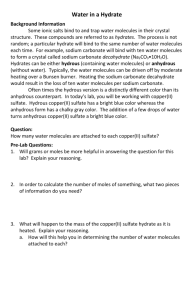File
advertisement
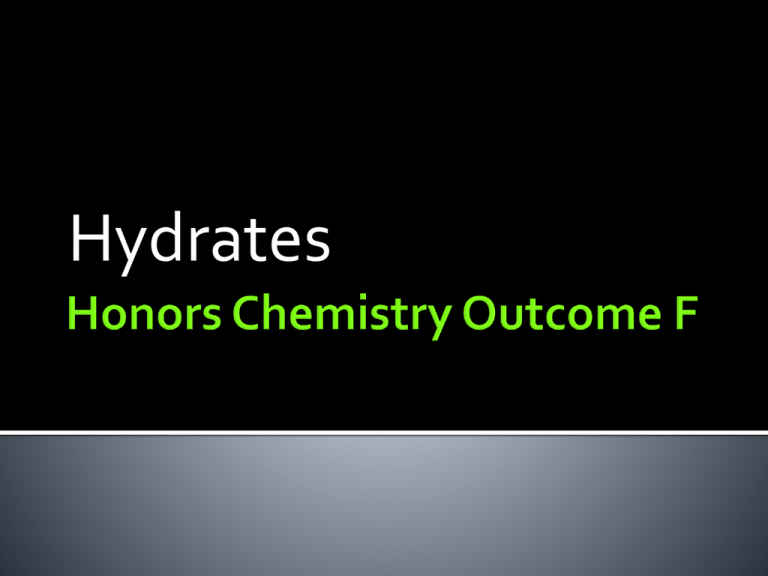
Hydrates An ionic compound (i.e. a salt) that attracts water molecules and forms loose chemical bonds with them Anhydrous = “without water” An anhydrous salt with water attached The compound has a specific number of water molecules bounded to its atoms 2 main parts: anhydrous solid (salt) and water Copper (II) chloride dihydrate Name the anhydrous solid first, then name the water second Usual naming rules apply for the anhydrous solid For the water add a prefix to the name hydrate Prefix indicates how many water molecules are present The number of water molecules associated with each formula unit of the compounds is written following a dot – for example: Na2CO3•5H2O (sodium carbonate pentahydrate) ▪ A pentahydrate has 5 water molecules associated with one formula unit of the compound. To write formula: use criss cross method learned with ionic compounds and use prefix as the # of water molecules present Name the following hydrates: CaCl2 ● 8 H2O FeSO4 ● 6 H2O LiOH ● H2O PbCl2 ● 3 H2O Li2CrO4 ● 5 H2O Na2SO4 ● 10 H2O Write the formulas for the following hydrates: Barium Phosphate dihydrate Copper(II)sulfate pentahydrate Cobalt chloride hexahydrate Magnesium sulfate heptahydrate Nickel (II) sulfate hexahydrate Copper (I) Bromide tetrahydrate
